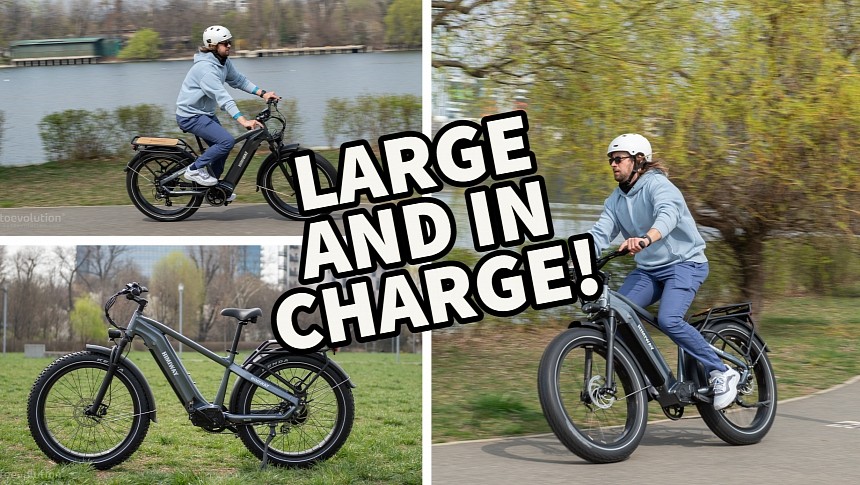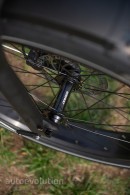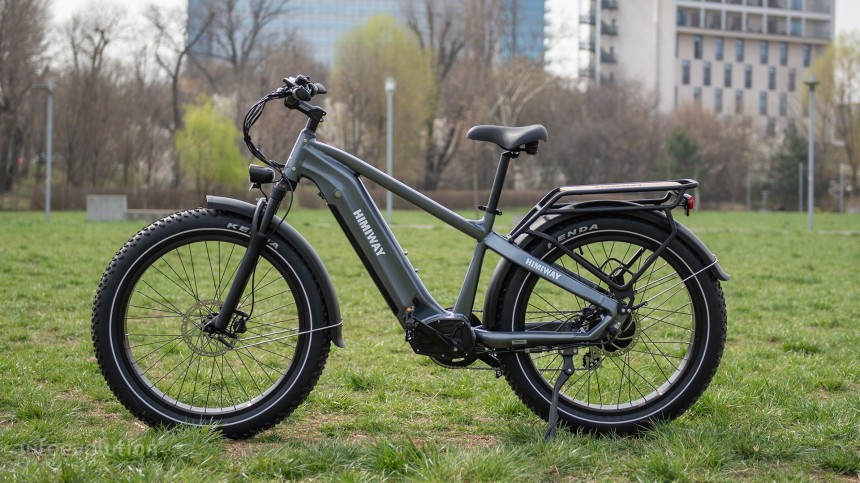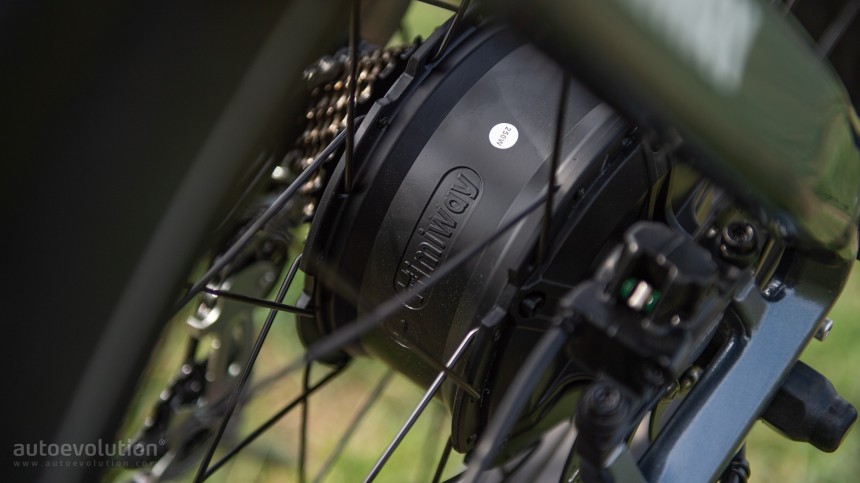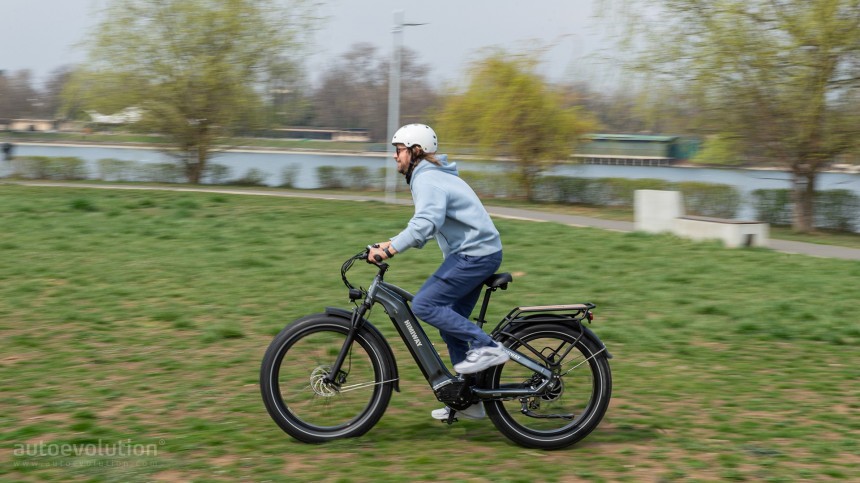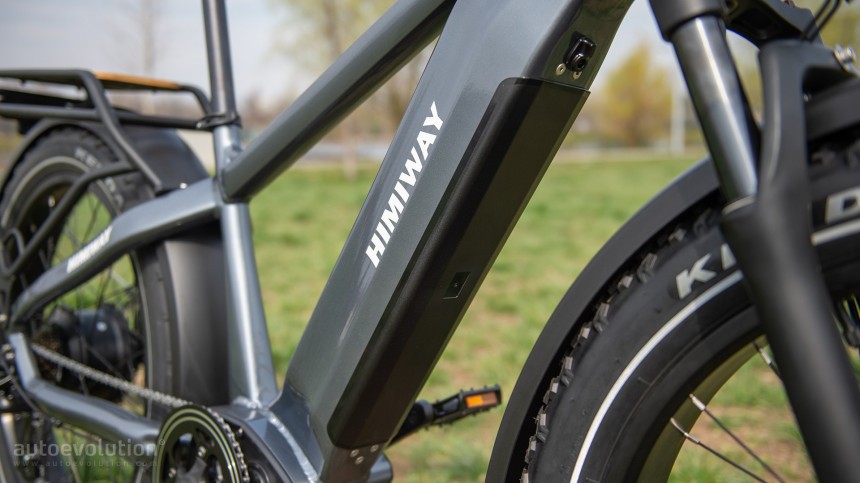Himi Himi ya, Himi yam, Himiway! It all started when my editor-in-chief approached me about an e-mail with some fresh e-bike to hit the scene. Naturally, I was intrigued, but the best news was that it all led to testing what I consider one of the heartiest and most beefed-up e-bikes you can ride around town. Grab your helmet, and let's ride on Himiway's Zebra.
For the past couple of months, I've been riding around on a machine that is supported by Olympic athletes. I'm talking about the Himiway Zebra, and after getting my hands on one, I could clearly understand why it has the backing that it does. In short, it's a $2,000 (€1,800 at current exchange rates) piece of electric urban hardware designed to do a bit more than take you from point A to point B. Oh, and it does all this with a speed that, sometimes, had me scared and doubting that I should be riding on a bicycle lane.
To understand what we're looking at here, it should help to understand that Himiway is a crew that's been around since 2017, and since then, they've focused on nothing other than e-bikes. The goal? It is to create machines that stand apart from others on the market by boasting a massive range, feels and is solid, and can, in all seriousness, replace your car for quite a few activities. Oh, and they should always be within the average Joe's budget, and $2,000 is kind of the limit any regular person would be willing to drop on an e-bike.
Now, fat tires are great for a few things and bad for others. For example, they are bulkier, which means they're only to be used on some terrains. For example, suppose you plan on riding an occasional dust road, sand-covered path, or even snow-ridden road. In that case, fat tires are a solid option as they provide a large surface area for grip and stability. In some settings, like mountain biking, where the balance between nimble and grip is delicate, fat tires are not what you want.
Another benefit of fat tires that leads to the Zebra's comfort is that you're typically riding around on two massive balloons, with 4 in of space between the ground and your rim. Couple that with a front fork, and you're looking at a pretty plush ride, albeit rather bouncy at times. Thus leading me to believe that Zebra is best suited for city use.
Then there's the Zebra's frame. Overall, we're looking at aluminum tubes shaped to fit a massive battery and electronics but also tuned for comfort. One thing you need to know is that the Zebra is a one-size-fits-all machine and that dropped top tube helps during mounting and unmounting. But the down tube is big, and I mean really big. Integrated is a 960 Wh (48 V 20 Ah) removable battery, which is the reason that the downtube is so large and why the Zebra boasts a manufacturer-reported max range of 80 mi (129 km)! This is both a burden and a gift, and you'll understand why shortly.
All that juice is there for a reason: a 750 W motor mounted to the rear wheel. This feature alone is one of the reasons I enjoyed this machine. If you've never ridden with a 750 W motor, all I have to say is that nearly 1 HP is more than enough to handle nearly anything your city throws at you. With it, the Zebra boasts a payload capacity of 400 lbs (182 kg). This is where the Zebra starts to show off some of its abilities to handle some of the activities you typically carry out with your car. You can thank 86 Nm 63 (ft-lb) of torque for that.
As for all the other little features that make the Zebra what it is, I loved the fact that Himiway took the time to think of rider and pedestrian safety. To help stop you safely and in time, a pair of Tektro hydraulic disc brakes with 180 mm (7.1 in) rotors are in place, and frankly, there could be no better choice; they do a great job of helping you control all the speed this puppy can crunch out.
Among two brake levers with electronic motor cut-off, we'll also find a Shimano Altus shifter with a derailleur tuned to the sounds of a 1x7 setup. Throw in an LCD, integrated lighting, a pair of fenders, and that big cargo rack at the back, and I'll be honest, you've got yourself what I'd like to consider one of the most beefed-up and ready entry-level e-bikes I've come across in the past year. Let's see how it all fares in the real world.
It was then time to take a little spin around the block, which helped me understand a bit of the dynamics, but it was on my way home that the Zebra surprised me. The ride was surprisingly stable due to a weight of over 80 lbs (with optional gear) and those fat tires. As a result, I frequently opened this baby's throttle and just enjoyed a ride that was very moped-like. that first experience then led me to want to explore the Zebra a bit more, asking myself the question, "What's really possible?" All this led me to tamper with this machine's settings, and I must say, Zebra is a more-than-fitting name.
Since I'm currently stationed over in Europe, I'm testing this fitting version, meaning that settings are set to lower speed standards than in the US. But it's all software limited, so you can tamper with this stuff. Now, I don't condone bending any local laws and regulations, but curiosity got the best of me. For science's sake! The result? I did the research and set the Zebra to its fullest capabilities.
Folks, this thing is a beast! I can't stress that enough. By messing with the settings, I was able to unlock the bike's class 3 settings, meaning a throttle cap at 28 mph (45 kph). I also tampered with power levels, shifting the feed from 36 V to the full 48 V. I went further, though, setting the speed cap at past 28 mph. The speed cap also depends on your controller, so a different controller allows for more speed. I went in deeper and finetuned these settings to my riding style, but the purpose of this is nothing but speed.
Well, that ride, and all the ones after, as I didn't modify these settings again, have brought a smile to my face every dang time! On a flat surface and under pedal assist, I can keep my speedometer at a constant 32 mph (52 kph), with bursts up to 34 mph (54 kph), and frankly, at this speed, you'll need to work your brakes a bit differently, planning your moves ahead. I don't always ride this fast, but it's nice to know that I can fly around empty city streets at night like a bat out of hell.
That's the speed and power aspect of things, but what about that 80 mi range stamped on the Himiway box? Well, like any manufacturer-gauged range, it comes with a disclaimer. Range tests are often conducted in optimum settings, under peak conditions, and while I never squeezed out 80 mi in assisted mode or even 60 mi ( 96 km) with the throttle, I'm still pulling in a consistent 50-55 mi (80-88 km) with assisted pedaling and around 40-45 mi (64-72 km) with the throttle. But remember, I'm sucking the juice out of that battery with the biggest proverbial straw possible.
Now, let's get something straight, bikes like the Zebra, fat tires bikes in particular, and ones you may have trouble carrying up a flight of stairs, are typically built for a certain style of riding, and that applies here too. It's a city bike! The idea of off-road exploration sounds neat and all, but it should be light, typically resuming to nothing more than a dirt road with some occasional gravel and pebbles or park paths. Also, some of the components, such as the battery pack, do vibrate as you hit unchartered terrains. My advice is to stick to the roads with this one. Then there's that overall weight. Yes, the Zebra is heavy, so be thankful for that battery pack.
As for the remaining little tricks up the Zebra's proverbial sleeve, I can safely say that the rear cargo rack, which is even dubbed a seat, does come in handy, and the cargo you place here is well within the Zebra's capabilities. I carried a backpack, a piece of luggage, some groceries, and even a colleague. The latter may have been a bit much, as he does weigh 62 kg (136 lbs), but this bugger did it, and it's still doing all of the above. A suspension fork also adds a whole bunch of squish for rougher rides, and lockout means you can direct all your energy into the rear tire.
Pros
Cons
Rating: 4.0/5.0
To understand what we're looking at here, it should help to understand that Himiway is a crew that's been around since 2017, and since then, they've focused on nothing other than e-bikes. The goal? It is to create machines that stand apart from others on the market by boasting a massive range, feels and is solid, and can, in all seriousness, replace your car for quite a few activities. Oh, and they should always be within the average Joe's budget, and $2,000 is kind of the limit any regular person would be willing to drop on an e-bike.
Design Evaluation
Well, all of Himiway's ideals are wrapped up in the rather tank-like Zebra. I say "tank-like" because while I was riding this thing around town, I couldn't help but feel like I was on a moped or even a smaller motorcycle. That has to do with the fact that the Zebra is built upon 26 in wheels with fat tires. You know, those massive 4 in cross-section rubbers, and once those get rolling, the Zebras bulky and heavy frame gives rise to a wonderful center of gravity.Now, fat tires are great for a few things and bad for others. For example, they are bulkier, which means they're only to be used on some terrains. For example, suppose you plan on riding an occasional dust road, sand-covered path, or even snow-ridden road. In that case, fat tires are a solid option as they provide a large surface area for grip and stability. In some settings, like mountain biking, where the balance between nimble and grip is delicate, fat tires are not what you want.
Then there's the Zebra's frame. Overall, we're looking at aluminum tubes shaped to fit a massive battery and electronics but also tuned for comfort. One thing you need to know is that the Zebra is a one-size-fits-all machine and that dropped top tube helps during mounting and unmounting. But the down tube is big, and I mean really big. Integrated is a 960 Wh (48 V 20 Ah) removable battery, which is the reason that the downtube is so large and why the Zebra boasts a manufacturer-reported max range of 80 mi (129 km)! This is both a burden and a gift, and you'll understand why shortly.
All that juice is there for a reason: a 750 W motor mounted to the rear wheel. This feature alone is one of the reasons I enjoyed this machine. If you've never ridden with a 750 W motor, all I have to say is that nearly 1 HP is more than enough to handle nearly anything your city throws at you. With it, the Zebra boasts a payload capacity of 400 lbs (182 kg). This is where the Zebra starts to show off some of its abilities to handle some of the activities you typically carry out with your car. You can thank 86 Nm 63 (ft-lb) of torque for that.
As for all the other little features that make the Zebra what it is, I loved the fact that Himiway took the time to think of rider and pedestrian safety. To help stop you safely and in time, a pair of Tektro hydraulic disc brakes with 180 mm (7.1 in) rotors are in place, and frankly, there could be no better choice; they do a great job of helping you control all the speed this puppy can crunch out.
Real-World Testing
Now, upon receiving the Zebra, the first thing I could make out was that this was no light bike. I hadn't even taken it out of the box yet, but it was enough to tell me what I was in for. With the help of a colleague, we carried the box up one flight of stairs, and that was enough to feel like I had just completed a stepper session at a local gym, not the best feeling. After catching my breath, it was time to get to work assembling the front wheel, cockpit, fenders, and lights, which took around 45 minutes to an hour, ensuring everything was assembled correctly and ensuring a safe ride.It was then time to take a little spin around the block, which helped me understand a bit of the dynamics, but it was on my way home that the Zebra surprised me. The ride was surprisingly stable due to a weight of over 80 lbs (with optional gear) and those fat tires. As a result, I frequently opened this baby's throttle and just enjoyed a ride that was very moped-like. that first experience then led me to want to explore the Zebra a bit more, asking myself the question, "What's really possible?" All this led me to tamper with this machine's settings, and I must say, Zebra is a more-than-fitting name.
Folks, this thing is a beast! I can't stress that enough. By messing with the settings, I was able to unlock the bike's class 3 settings, meaning a throttle cap at 28 mph (45 kph). I also tampered with power levels, shifting the feed from 36 V to the full 48 V. I went further, though, setting the speed cap at past 28 mph. The speed cap also depends on your controller, so a different controller allows for more speed. I went in deeper and finetuned these settings to my riding style, but the purpose of this is nothing but speed.
Well, that ride, and all the ones after, as I didn't modify these settings again, have brought a smile to my face every dang time! On a flat surface and under pedal assist, I can keep my speedometer at a constant 32 mph (52 kph), with bursts up to 34 mph (54 kph), and frankly, at this speed, you'll need to work your brakes a bit differently, planning your moves ahead. I don't always ride this fast, but it's nice to know that I can fly around empty city streets at night like a bat out of hell.
That's the speed and power aspect of things, but what about that 80 mi range stamped on the Himiway box? Well, like any manufacturer-gauged range, it comes with a disclaimer. Range tests are often conducted in optimum settings, under peak conditions, and while I never squeezed out 80 mi in assisted mode or even 60 mi ( 96 km) with the throttle, I'm still pulling in a consistent 50-55 mi (80-88 km) with assisted pedaling and around 40-45 mi (64-72 km) with the throttle. But remember, I'm sucking the juice out of that battery with the biggest proverbial straw possible.
As for the remaining little tricks up the Zebra's proverbial sleeve, I can safely say that the rear cargo rack, which is even dubbed a seat, does come in handy, and the cargo you place here is well within the Zebra's capabilities. I carried a backpack, a piece of luggage, some groceries, and even a colleague. The latter may have been a bit much, as he does weigh 62 kg (136 lbs), but this bugger did it, and it's still doing all of the above. A suspension fork also adds a whole bunch of squish for rougher rides, and lockout means you can direct all your energy into the rear tire.
The Big Picture
So far, I've only explored a few settings with the Zebra, but those that I have ended in no accidents, getting to where I want to go and doing it fast, sometimes carrying goods in the process, and all of it ending with a smile. Sure, it's heavy, and I would really enjoy less wiring all over the bike, but for your first speed demon with some functionality aside from just cycling, this one's a keeper, and that's the essence of the Zebra. Best of all, because of the hardware and software Himiway places at your disposal, as you adapt to your Zebra, you can progressively access new levels of speed and power. In short, it grows with you, and that's a big win in my book. Himi Himi ya, Himi yam, Himiway!Pros
- Power
- Range
- Adaptability
- Fit for Urban Settings
- Heavy (Stability While Riding)
Cons
- Lots of Wires
- Altus Drivetrain
- Heavy (Hard to Lift)
- Low-End Shimano Drivetrain
Rating: 4.0/5.0
